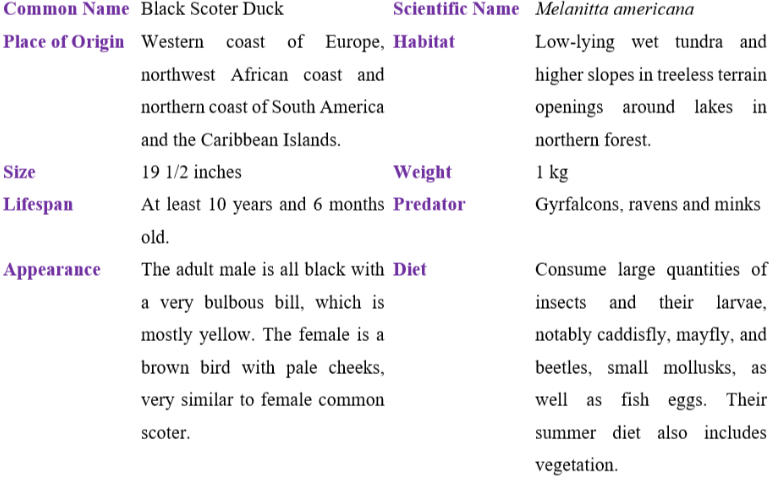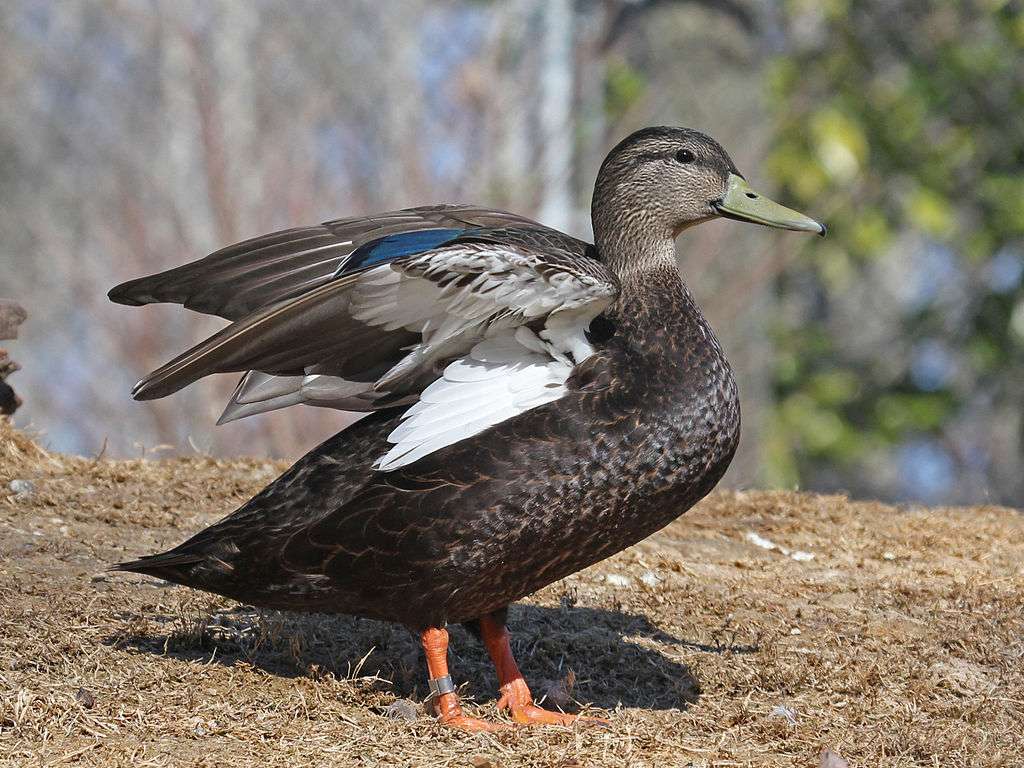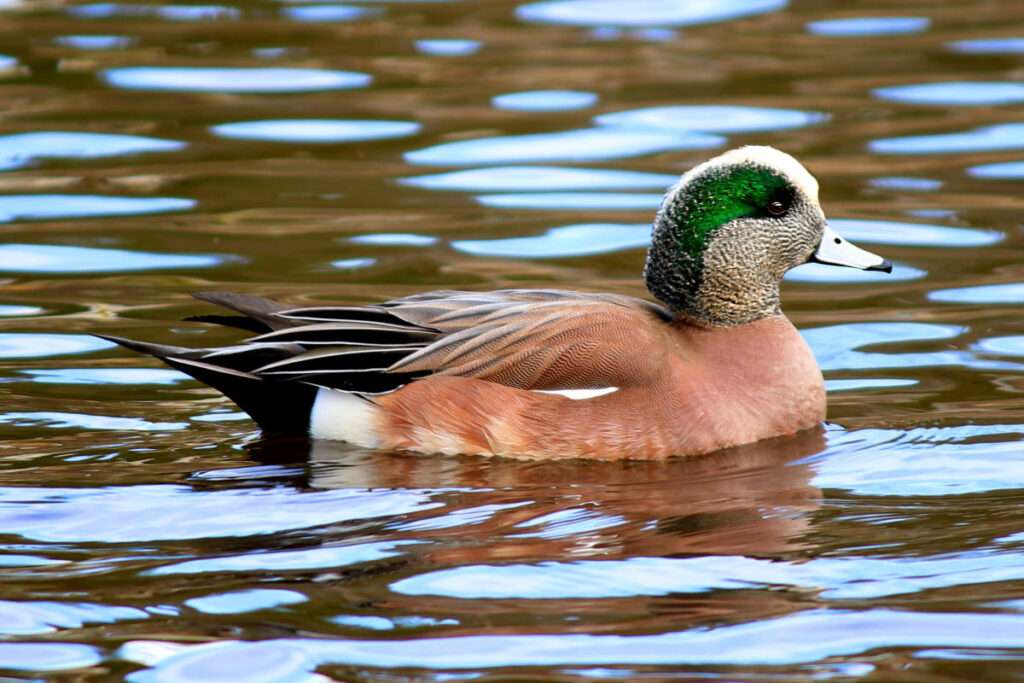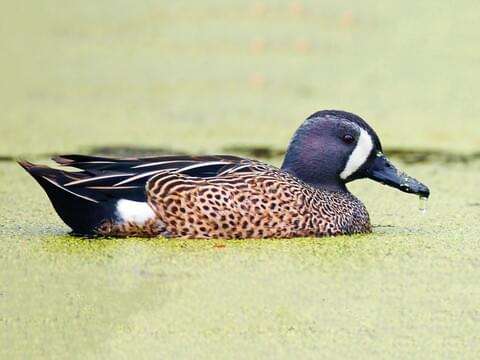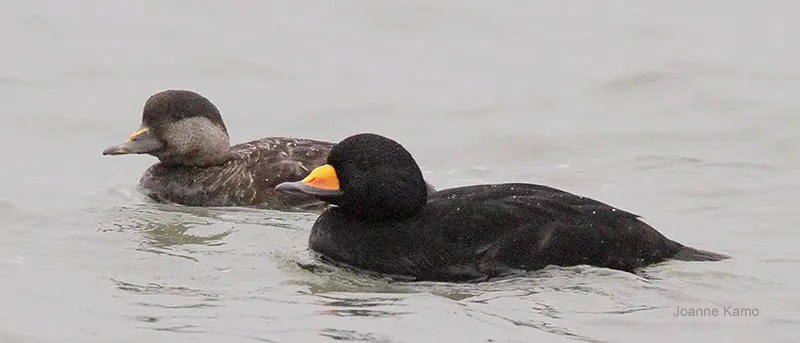
The American scoter, often known as the black scoter, measures 43 to 49 cm (17 to 19 in) in length. The words “black” and “duck” in Ancient Greek are combined to form the genus name. The Latin word for “American” is derived from the species name.
Fun Fact
- On occasion, the Black Scoter will swim while flapping its wings and lifting its body out of the water. It almost usually finishes its display, unlike other scoters, with a powerful downward thrust of the head.
- The Black Scoter of North America (and northeastern Russia) and the Common Scoter of Eurasia were once believed to be the same species. Although male Common and Black Scoters’ bills differ, the case for classifying both as full species wasn’t made until a 2009 examination of the variations in courtship calls.
Description
Black Scoters are one of the species of waterfowl with some of the loudest sounds. Male black scoters are entirely black, with the exception of a yellow protrusion at the base of the bill and the gray underside of the flight feathers. The legs and feet are dark, and the eye is brown. Female black scoters have dark brown cheeks, chins, and throats in contrast to their dark heads. The legs and feet are dark, and the eye is brown.
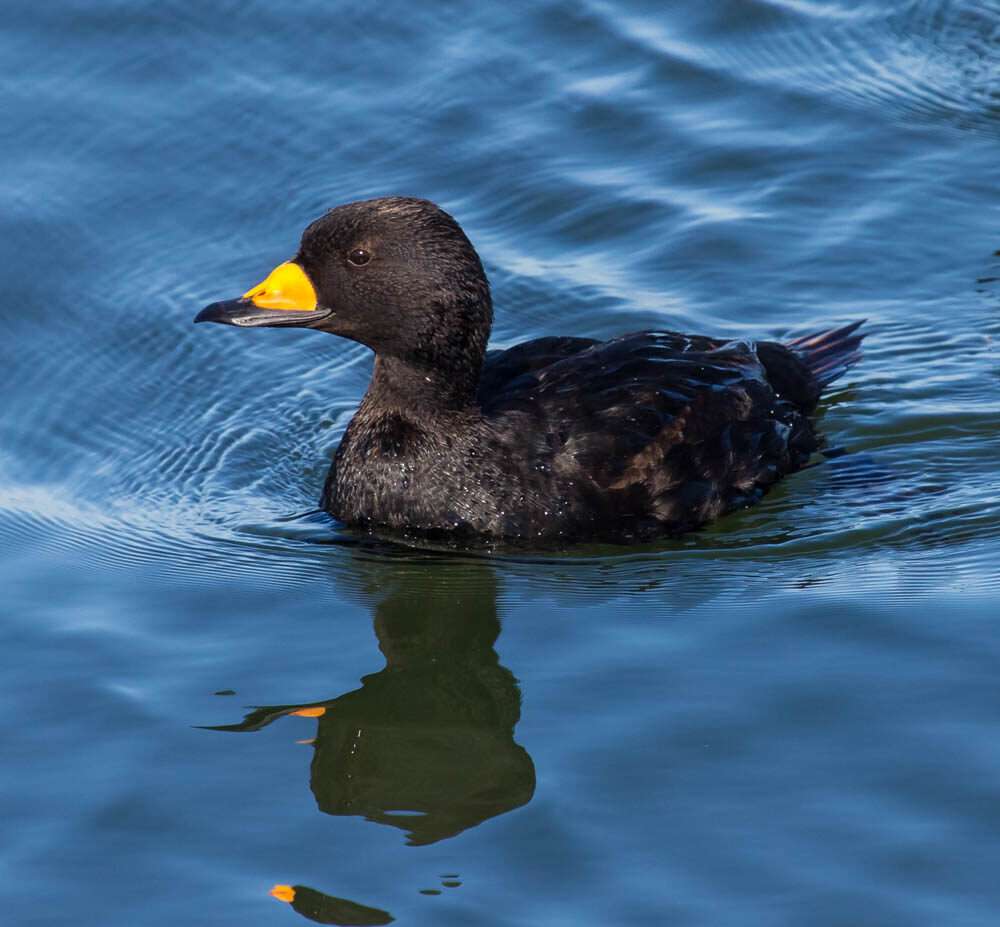
Predators
Few researches have examined predation, and little is known about it. Gyrfalcons will hunt adults in Iceland. Ravens and minks take eggs and young.
Diet
Black scoters dive to eat small fish, crabs, and mollusks that are found in freshwater and marine environments. Eelgrass, widgeon grass, muskgrass, algae and pond weeds that are present in inland settings are also minor components of their diet.
Habitat
Seacoasts; tundra along the shore in the summer. Low-lying, moist tundra, higher slopes devoid of trees, openings surrounding lakes in northern forests, and other areas serve as breeding habitat. Wintertime fishing is primarily done in bays and along exposed beaches, typically in shallow water up to one mile off the coast. On the Great Lakes and other freshwater areas, migratory birds halt; some stay for the winter.
As Pet
Since reproducing would be challenging and they prefer to remain in their natural environments, these should not be kept as pets. At-home replication of their habitat doesn’t seem to be feasible.
Table
